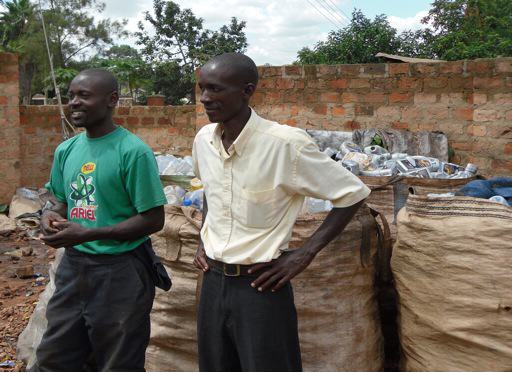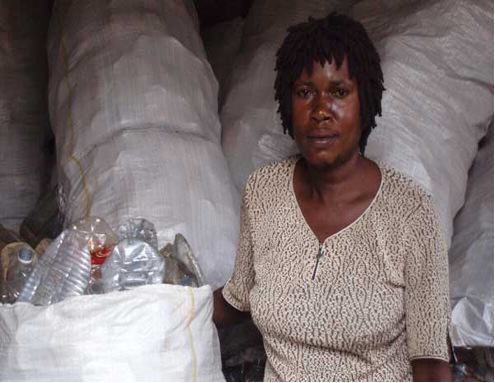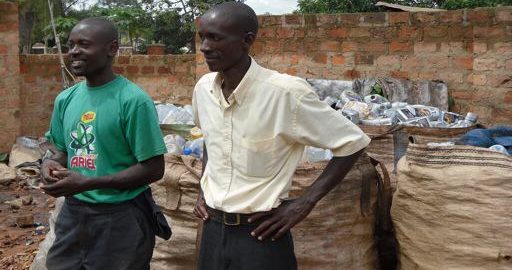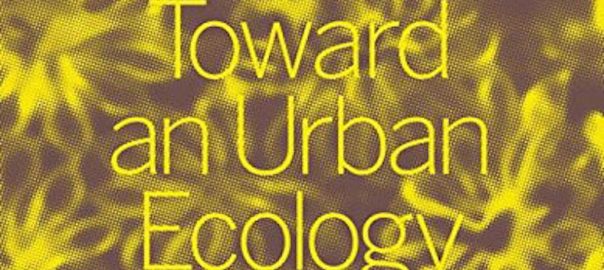Frameworks for understanding the gendered nature of urban waste management have yet to emerge and analyses on the relationship between sustainable urban resource management and waste re-use and recycling at the neigbourhood-level are few. Those that do exist are more focused on city-level industry and infrastructure. This article illustrates how gender relations differentiate the ways in which women as compared to men manage urban waste, and how urban waste management impacts the underlying inequalities and relations between women and men. By presenting a gender perspective, the article gives a starting point for understanding how neigbourhood-level innovation around the re-use and recycling of wastes can be re-framed to promote equal participation in sustainable urban resource management and contribute to gender inclusive socio-economic transformation in cities of Africa.
Unlike other productive resources such as land, energy, and water that are subject to the prevailing forces of demand and supply in the city, waste materials in much of urban Africa are usually unclaimed, lying free on the streets, in restaurants, and in homes in anticipation of utility maximizers motivated by the costs and benefits of marketing discarded materials. However, much of the neigbourhood-scale innovations that seek to balance the need for household income enhancement and urban environmental protection through organic and inorganic waste re-use and recycling have not been sufficiently written about and shared internationally. Yet, innovations within the urban waste economy can be up-scaled to help developing cities in Africa increase resource productivity and adapt to a future of resource limitations and climate uncertainty.
In Kampala city, Uganda, where I have lived and pursued most of my research, dwellers in the low-lying and less economically advantaged neigbourhoods are increasingly motivated by an intersecting set of socio-economic and environmental factors to add value to discarded materials. The observable types of waste vendors include: i) regular waste vendors, ii) wholesale waste dealers, and iii) home to home waste dealers. Regular waste vendors own permanent spaces in markets, under a shed roof constructed by the authorities, for which they pay monthly rent, selling banana peelings, sacks, lint, and chicken litter as their commodities. These vendors collect waste materials from households and communities in the evening and bring them to the market early in the morning. Wholesale dealers, conversely, largely sell inorganic wastes which include plastic tins; bottles; and metal and glassware, which have a long shelf-life when compared to what regular waste vendors deal in.

Unlike the regular vendors, wholesale dealers can access or control or own land and housing spaces where they can collect and sort large volumes of waste. A case in point is a demonstration center in a suburb known as Kasubi-Kawaala, in the northwestern part of Kampala city, which occupies approximately 50 x 60 square feet for the collection of banana peelings, plastic bottles, tins, sawdust, cow dung and metal. Wholesale dealers also have access to external markets (outside the community). But the challenge is that prices for commodities are not usually set locally, but are set by marketplaces in China and Southern Sudan, for example. Wholesale dealers usually ‘step down’ from the external market price to allow for the collection, handling, storage and transportation of the materials to the nearest, most advantageous buyer outside the community.

Home to home waste vendors collect plastic and soda bottles, tins, newspapers, food stuffs, saw dust, cow dung and banana peelings from restaurants, marketplaces, retail shops and residential premises in all parts of the city. From the responses given, these vendors can carry 30 to 40 kg of waste depending on the type of item they have collected. From empirical observations, these vendors are usually male youth (aged between 18-30 years) and boys (aged between 10-16 years); they are frequently associated with illegal waste dumping. These vendors walk long distances between the upland and low-lying areas of Kampala city in search for the desired volumes of waste materials. They have no designated distribution points like wholesale dealers and regular waste vendors do. The most common waste innovation marketed by all these types of vendor are garbage briquettes. These are created when banana peels and other dried organic material are put into a large bin and burned at high heat and low oxygen, which creates a kind of charcoal material made of garbage. This is then crushed and mixed with clay and cassava flour (as a glue) and rolled into balls to create briquettes that can be used instead of charcoal.

Gender relations as an urban phenomenon that socially defines individual roles, needs, and expectations within a network of human interactions shape socio-economic routines in the urban waste economy from a number of fronts. First, waste is a heterogeneous material and difficult to describe or classify. This is because the definition of waste can be very subjective: what represents waste to one person may represent a valuable resource to another. For example, oily milk packages may be used as fuel; leftover food may be fed to pigs and goats; discarded cardboard may serve as walls and roofs of houses. The classification of discarded materials may be influenced by the gender of the person making the judgment. What looks like ‘junk’ to women may be motorcycle parts to men; what looks like ‘dirt’ to men may be compost or fertilizer to women; there are myriad examples of different sexes “seeing” things differently (Muller, 1998). This means that waste needs to have a strict gender sensitive legal definition to comply with the law; such strict definitions have financial and legal implications for private businesses, local authorities, communities, and central governments.
Second, experiences from the communities have shown that as men and women participate (or not) in managing waste within the household, their relationship to discarded materials may depend on who they are, as much or more than on what they do. In particular, the frequently subordinate status of women may affect their general access to and control of resources, so that the “waste” materials or waste related activities may be the only ones which are available to them. This implies that new schemes for managing waste materials, which are blind to women compared to men’s activities, may destroy fragile livelihoods. Third, the household/social arrangement surrounding the use of waste reduction/recycling technologies must be innovated for proper waste management options. Reduction involves good practice, input material changes, and technological changes for environmental cost savings arising from producing less waste, which include savings in energy costs, waste storage space, transport costs, and lower emissions into the air, the water, and on land.
Waste reduction or recycling techniques, however, are often seen in highly limited terms as particular mechanical, chemical, or biological processes used in making one good for another. The extremely narrow view of technology that emerges from such a limited outlook does little justice to the “social content” of technology. The making of things involves not merely the relationship between, say, raw materials and final products, but also with the social organization that permits the use of specific techniques of production in homes, factories, or workshops. This means that the so-called “productive” activities that technology does, may be parasitic on other work being done, such as housework and food preparation, cleaning, and the care of children and adults as a source of labor for the operations. Technology in waste management is, in this regard, not only about equipment and its operational characteristics but also about social arrangements that permit the usage of equipment and the so-called productive processes carried out.
Technology for sanitation in public places—that is, waste collection and recycling machinery—has gender related questions that are critical for success in the targeted communities. For example, can women-owned enterprises as well as men-owned enterprises afford the investment? Are women-owned enterprises able to generate a higher work volume to pay for such investments, to the same extent as men-owned or mixed enterprises? Do women as well as men have equal access to the necessary training? Can women as well as men continue with related income earning activities, such as sorting the waste? How does new technology affect the health of women compared to men? Does it create equal risks or offer equal protection against health risks? Leaving such issues to the existing forces of competition and inequality in society may reinforce, or even increase, women’s social-economic disadvantage.
The re-use of ‘waste’ involves using a product or package more than once or re-using it in another application. Examples of re-use include re-using supermarket consumer bags, glass milk and water bottles, re-trading partly won tires or selling car scrap to merchants. Reusing extends the life of the material used and therefore reduces the waste quantity requiring treatment and disposal. However, waste re-use can be affected by consumer preferences that may be different in the case of women compared to men. Men and women value waste materials differently and see their usefulness for different purposes, such as domestic utility, saving on household expenditure, earning money or other purposes. Such issues are at stake in the field of gender and urban natural/social resources important in local livelihoods. Who uses which resources? Who controls decisions about how resources are used? Who is helping to sustain local resources and who benefits from this? How is the situation changing? Answers to these questions must be sought through gender-focused research in waste management.
Lastly, public gatherings and committee meetings at the neighborhood and community levels and at city councils are often the means of consulting the community about development priorities, and are increasingly a key ingredient in setting urban development agendas. In an era of intensifying pressure on municipalities for cost recovery and fiscal discipline, such consultations are also likely to be seen as means of securing a public commitment to pay for private waste management services. Here, too, gender considerations are important, as women and men may differ in their priorities for new or improved services, preferences for the type of service, and willingness and ability to pay. Several elements are at play when a community is consulted about waste services. The first is that women and men are likely to have different interests regarding environmental improvement, based on the different uses they make of the immediate environment. The second is the nature of the consultation process itself. This concerns the composition of the committees that take decisions and the forms of representation between the lower level and higher level committees. The ways in which the negotiation with the city council is structured, and the time and setting of the meetings may define the environment as “men’s” space, an environment in which women are not comfortable or free to express their opinions. Community consultation also concerns the degree to which a process of empowerment takes place among community groups. Do men and women, and members of different social groups, have equal opportunity to understand issues involved, to express their opinions and influence the outcomes? Simple but crucial decisions in this respect might concern the choice of the meeting place and time, language used, and division of representative tasks, such as negotiating with the local authorities.
This gendered understanding of the urban waste economy is advantageous to interventions that seek to achieve a balance between urban economic development, long-term ecological sustainability and social justice through the following ways:
- Studies – disaggregating waste management modes and preferences by sex, and undertaking environmental health impact assessments by comparing vulnerability using gender-based variables such as what roles women play compared to men in collecting, sorting, disposing, storing, reuse and recycling of waste at multiple scales (household to community to city levels).
- Capacity development – training opportunities on sustainable urban waste management are offered to an equal number of female and male change agents/ambassadors to promote practices that not only safeguard communities against waste-related hazards but also offer economic opportunities through re-use and recycling. This can be vital to the empowerment of communities, especially when participants acknowledge and acquire the ability to transform the household/neigbourhood waste activities into credible and environmentally sound businesses, and are capable of negotiating for enabling standards, regulations, and partnerships with formal institutions, mainly the private sector and local government authorities.
- Incubation centers for cleaner technologies – gendered innovations as the process of integrating gender analysis around women’s and men’s roles, and research into technology development for commercial and non-commercial management of urban waste, can enhance the quality of outcomes. This research can be completed through interdisciplinary collaborations between gender experts, natural scientists, urban economists, and engineers working together to reform research agendas and institutions.
Buyana Kareem
Kampala
References
Muller, M. (1998) ‘The Collection of household Excreta in Urban Low-income Settlements’, WASTE/ENSIC, Gouda/Bangkok












Thanks Gloria
Brilliant and insightful article